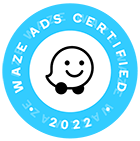
Improve lead conversion by serving targeted content to site visitors
By: Richard Rutigliano, PriMedia Inc.
As more companies embrace the Internet, and the search engines that direct traffic rewrite the rules of search, it becomes harder for any business to secure first-page search results and stand out from the crowd.
At the same time, however, new technologies are emerging that enable companies to connect with website visitors in a more personal way and improve lead conversion. By mastering the new rules of search and delivering targeted content on the fly on your website, savvy companies can maximize return from their investments in search engine marketing (SEM).
A Moving Target
Google and other search engines are engaged in a continuous quest to improve search results and stay one step ahead of website operators who game their website code to get to the top of the search results pile. A site that consistently drew first-page rankings a year ago might find itself tumbling down the pile due to revisions in the search algorithms.
Site owners have control over many internal site factors that affect search performance. To succeed in search, a site should contain relevant content that prominently features the most widely used search terms for what they’re selling. The terms should be repeated with the proper frequency and appear in all the right places and combinations in both the text and the website code.
By using the right words and phrases properly, the site signals the search engines accurately about the company’s activities, so the search engines know when to include the site in search results. Proper use of keywords and key phrases does not guarantee first-page search rankings, but it is an essential building block.
A site also bolsters search performance when it attracts more traffic than similar sites and has better connections to external sites. Companies can improve their linking while attracting more traffic by taking advantage of local business directories run by Google, Yahoo, Bing, Yelp, Merchant Circle and others. It is essential to claim your company’s listings in online directories, provide your location and a complete description of what the company does, and include a link to the company website.
Vital Links
Every business leader should also consider joining the Better Bureau and Angie’s List and placing logos with links on their company websites. Not only do they drive traffic and improve search performance, they give the consumer a measure of confidence about the company.
Another important SEM tool for attracting traffic and raising the company’s profile is pay-per-click (PPC) advertising, such as Google AdWords. With PPC, a company places text advertisements with links to the company website on pages of relevant search results. The company gets its name and message in front of prospects while they are searching for the very products and services that the company sells.
Beyond those essential strategies, there are other important steps a company can take to attract more traffic and improve search performance. One of the most beneficial is to provide useful, informational content relating to your products and services. Companies should post articles and web pages that provide helpful information about their products and services and how they can benefit customers. When properly optimized for search, informative content does triple duty: It attracts traffic in its own right, it improves search performance, and it reflects well on the company.
When a company supplements its information resources with fresh content via a blog or YouTube channel and uses social media to promote each new post, search performance improves because the Google search algorithm favors sites that are regularly updated. A steady flow of fresh website content improves your chances for a first-page ranking in search results.
Convert Your Leads
Optimizing your site’s search performance is essential for increasing your traffic flow, but that alone will not sell your products and services. To maximize your website’s potential as a sales environment, you need to target website visitors with customized content designed to convert site visits to sales.
Targeting customers based on demographics or behavior is a widely used e-commerce practice that Internet users encounter daily. Amazon.com analyzes customer behavior on the fly to offer purchase recommendations, and Twitter serves up recommendations of which members to follow based on who the member follow currently.
To glean information about each visitor to their site, companies need to track site visitors and profile them based on information gathered when they visit. Combining information from previous and current visits, a company can determine their IP address, how they came to the site, what sort of device they are using, what links they click on, what pages they have viewed in previous visits, and how long they spend on each page.
To personalize the content they see, including special offers, the company must assign each visitor to a category using predetermined rules. For example, if the visitor is coming to the site for the first time, you might assign them to a category of “prospect or customer making first visit.” If they come to the site from a Google search for “boiler installation,” you might assign them to “installation prospect.” If they are a repeat visitor who has never visited your indoor air quality page, they could be designated “diversification prospect.”
Who’s There?
The information you glean on visitors from their browsers might seem limited, but it is often sufficient to assign a meaningful designation for the purposes of targeted marketing. You’ll need to develop a set of categories into which you will assign each visitor based on your sales objectives.
If you are prepared to serve up multiple forms of personalized content, you can even assign a customer to multiple categories. For example, if you identify a visitor as a known customer who has never bought a particular product from your company or hired you for a certain service , you can tag them to see content and special offers relating to both.
To deliver personalized content, you need to tweak your website to serve pages and modules dynamically in response to the categories and rules that you develop. For example, you can build two dynamic advertising modules and one dynamic internal links module into the page design that carries throughout the site. Whenever a visitor views a page, those modules will populate on the fly with content tailored for those categories. The ad modules could serve up special offers for customers, and the links module could serve up short informational blurbs about your products with hyperlinks to informational resources or a recent blog post.
If the customer leaves your site without buying, you can continue to target them with your advertising using a remarketing strategy via Google AdWords. As they travel to other sites that display Google ads, Google can place your ad dynamically on pages that they view.
Be Aggressive
Targeted marketing strategies like these transform search engine marketing into a far more active pursuit. Instead of sitting back and hoping that consumers will discover and choose your services, you can aggressively pursue your goals. Some companies will choose to dabble in targeted marketing, while others will seize the opportunity and serve radically different versions of pages to different categories of visitors, with regular content updates.
Companies also will make individual choices about how to craft and deploy online offers and coupons. Whatever your strategy, it makes sense to focus on closing deals online. If, for example, you’re trying to convert non-budget customers to budget plans, deploy an online application that will enable the customer to learn their monthly budget payment and sign up on the spot. That way, you get the results you want immediately while minimizing the load on the sales team. Customers also appreciate being able to complete transactions online.
Diversifying your company’s services is more important than ever now, and targeting is a great strategy for driving sales of new products and services to existing customers. If you have ambitious goals for this year, consider targeting as a powerful accelerant for your sales and marketing strategy.
Richard Rutigliano is President of PriMedia, Inc., a full-service Advertising/Integrated Marketing Communications/New Media firm with offices in New York, Boston, and Philadelphia.















